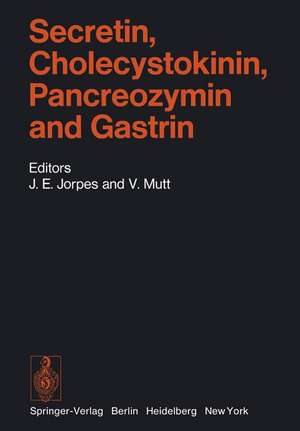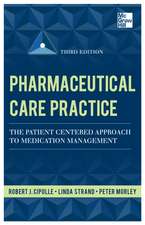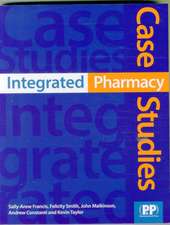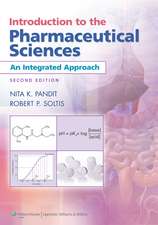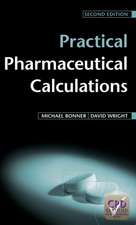Secretin, Cholecystokinin, Pancreozymin and Gastrin: Handbook of Experimental Pharmacology, cartea 34
Editat de J. Erik Jorpes Contribuţii de M. Bodanszky Editat de Viktor Mutt Contribuţii de R. Carratu, D. A. Dreiling, R. Fussgänger, J. D. Jamieson, H.D. Janowitz, J.E. Jorpes, V. Mutt, E. F. Pfeiffer, J. Plessier, M. L. Ramorino, S. Rapits, A. Torsoli, M. J. Zimmermannen Limba Engleză Paperback – 15 dec 2011
Din seria Handbook of Experimental Pharmacology
- 5%
 Preț: 3517.78 lei
Preț: 3517.78 lei - 5%
 Preț: 1425.97 lei
Preț: 1425.97 lei - 5%
 Preț: 1435.28 lei
Preț: 1435.28 lei - 5%
 Preț: 1430.52 lei
Preț: 1430.52 lei - 5%
 Preț: 1930.69 lei
Preț: 1930.69 lei - 5%
 Preț: 1922.47 lei
Preț: 1922.47 lei - 5%
 Preț: 1937.46 lei
Preț: 1937.46 lei - 5%
 Preț: 2117.58 lei
Preț: 2117.58 lei - 5%
 Preț: 2119.96 lei
Preț: 2119.96 lei - 5%
 Preț: 2117.38 lei
Preț: 2117.38 lei - 5%
 Preț: 1088.17 lei
Preț: 1088.17 lei - 5%
 Preț: 1098.27 lei
Preț: 1098.27 lei - 5%
 Preț: 1420.29 lei
Preț: 1420.29 lei - 5%
 Preț: 1104.84 lei
Preț: 1104.84 lei - 5%
 Preț: 1104.84 lei
Preț: 1104.84 lei - 5%
 Preț: 1108.14 lei
Preț: 1108.14 lei - 5%
 Preț: 1106.69 lei
Preț: 1106.69 lei - 5%
 Preț: 1105.77 lei
Preț: 1105.77 lei - 5%
 Preț: 1174.35 lei
Preț: 1174.35 lei - 5%
 Preț: 1432.50 lei
Preț: 1432.50 lei - 5%
 Preț: 408.48 lei
Preț: 408.48 lei - 5%
 Preț: 409.63 lei
Preț: 409.63 lei - 5%
 Preț: 539.90 lei
Preț: 539.90 lei - 5%
 Preț: 720.47 lei
Preț: 720.47 lei - 5%
 Preț: 733.09 lei
Preț: 733.09 lei - 5%
 Preț: 731.27 lei
Preț: 731.27 lei - 5%
 Preț: 746.43 lei
Preț: 746.43 lei - 5%
 Preț: 747.72 lei
Preț: 747.72 lei - 5%
 Preț: 725.24 lei
Preț: 725.24 lei - 5%
 Preț: 742.80 lei
Preț: 742.80 lei - 5%
 Preț: 393.23 lei
Preț: 393.23 lei - 5%
 Preț: 735.66 lei
Preț: 735.66 lei - 5%
 Preț: 728.33 lei
Preț: 728.33 lei - 5%
 Preț: 389.52 lei
Preț: 389.52 lei - 5%
 Preț: 730.71 lei
Preț: 730.71 lei - 5%
 Preț: 740.58 lei
Preț: 740.58 lei - 5%
 Preț: 730.19 lei
Preț: 730.19 lei - 5%
 Preț: 723.42 lei
Preț: 723.42 lei - 5%
 Preț: 731.27 lei
Preț: 731.27 lei - 5%
 Preț: 726.68 lei
Preț: 726.68 lei - 5%
 Preț: 3516.49 lei
Preț: 3516.49 lei - 5%
 Preț: 729.26 lei
Preț: 729.26 lei - 5%
 Preț: 737.11 lei
Preț: 737.11 lei - 5%
 Preț: 730.92 lei
Preț: 730.92 lei - 5%
 Preț: 738.78 lei
Preț: 738.78 lei - 5%
 Preț: 909.94 lei
Preț: 909.94 lei - 5%
 Preț: 720.10 lei
Preț: 720.10 lei - 5%
 Preț: 734.74 lei
Preț: 734.74 lei - 5%
 Preț: 727.80 lei
Preț: 727.80 lei
Preț: 723.93 lei
Preț vechi: 762.04 lei
-5% Nou
Puncte Express: 1086
Preț estimativ în valută:
138.54€ • 144.11$ • 114.37£
138.54€ • 144.11$ • 114.37£
Carte tipărită la comandă
Livrare economică 14-28 aprilie
Preluare comenzi: 021 569.72.76
Specificații
ISBN-13: 9783642807060
ISBN-10: 3642807062
Pagini: 392
Ilustrații: XII, 376 p.
Dimensiuni: 170 x 244 x 21 mm
Greutate: 0.62 kg
Ediția:Softcover reprint of the original 1st ed. 1973
Editura: Springer Berlin, Heidelberg
Colecția Springer
Seria Handbook of Experimental Pharmacology
Locul publicării:Berlin, Heidelberg, Germany
ISBN-10: 3642807062
Pagini: 392
Ilustrații: XII, 376 p.
Dimensiuni: 170 x 244 x 21 mm
Greutate: 0.62 kg
Ediția:Softcover reprint of the original 1st ed. 1973
Editura: Springer Berlin, Heidelberg
Colecția Springer
Seria Handbook of Experimental Pharmacology
Locul publicării:Berlin, Heidelberg, Germany
Public țintă
ResearchCuprins
I Secretin and Cholecystokinin (CCK). With 42 Figures.- A. Secretin.- B. Common Aspects on the Gastrointestinal Hormones.- C. Biological Actions of the Gastrointestinal Hormones.- D. The Bioassay of Secretin and Cholecystokinin.- References.- II The Synthesis of (Porcine) Secretin. With 6 Figures.- A. Introduction.- B. Strategies.- C. Attempted Synthesis of Secretin on a Solid Support.- D. Synthesis of Secretin by the Stepwise Approach (Through Isolated Intermediates).- E. Synthesis of Secretin by Fragment Condensation.- F. The Conformation of Secretin.- G. Conclusions.- References.- III The Secretory Process in the Pancreatic Exocrine Cell: Morphologic and Biochemical Aspects. With 16 Figures.- A. Route and Timetable of Intracellular Transport in Resting Exocrine Cells.- B. Metabolic Requirements for Intracellular Transport over the RER-Condensing Vacuole-Pathway (steps 2–4).- C. Metabolic Aspects of Condensing Vacuole Transformation.- D. Studies on Zymogen Granule Discharge.- E. Metabolic Requirements for Zymogen Granule Discharge.- References.- IV The Secretin Test. With 7 Figures.- A. General Introduction.- B. The Secretin Test of Pancreatic Function.- C. Secretin-Pancreozymin Tests of Pancreatic Function.- D. Serum Enzyme Tests in the Diagnosis of Pancreatic Disease.- References.- V On the Use of Cholecystokinin in the Roentgenological Examination of the Extrahepatic Biliary Tract and Intestines. With 17 Figures.- 1. Gall Bladder and Cholecysto-Cystic Junction.- 2. Sphincter of Oddi.- 3. Intestines.- References.- VI Gastrointestinal Hormones and Islet Function. With 37 Figures.- I. Introduction.- II. Historical Review.- III. Some Remarks on the Chemical Structure, Extra-insular Actions and Sites of Origin of the Gastrointestinal Hormones.- IV. ThePharmaco-Chemical (or Pharmaeo-Dynamie) Approach to the Intestinal Factor in Question.- V. Reaction of the Intestinal Hormones in Response to Ingestion of Food.- VI. Chemical Configuration and Endocrine Action of the Intestinal Hormones. The Role of the Exocrine Pancreas in the Regulation of Islet Function by Intestinal Hormones.- VII. Reestablishment of the Primary Role of Non-Physiological Glucose Levels in Regulating Insulin and Glucagon Secretion, Irrespective of Cholecystokinin-Pancreozymin and Secretin Action.- VIII. The Significance of Intestinal Modulation of Islet Function.- IX. Summary and Conclusions.- References.- VII The Use of Cholecystokinin in the Roentgenological Examination. Clinical Aspects. With 10 Figures.- I. Introduction. Early History.- II. Cholecystokinin and the Evacuation of the Gallbladder.- III. Cholecystokinin and the Common Bile Duct.- IV. Cholecystokinin, the Sphincter of Oddi and Duodenal Motility.- Cholecystokinin and the Postoperative Choledochus.- V. The Use of Cholecystokinin in Endoscopy.- VI. Cholecystokinin in the Scintigraphy of the Gallbladder and Pancreas.- VII. Cholecystokinin and Duodenal and Ileal Peristalsis.- VIII. Conclusions.- References.- Author Index.
